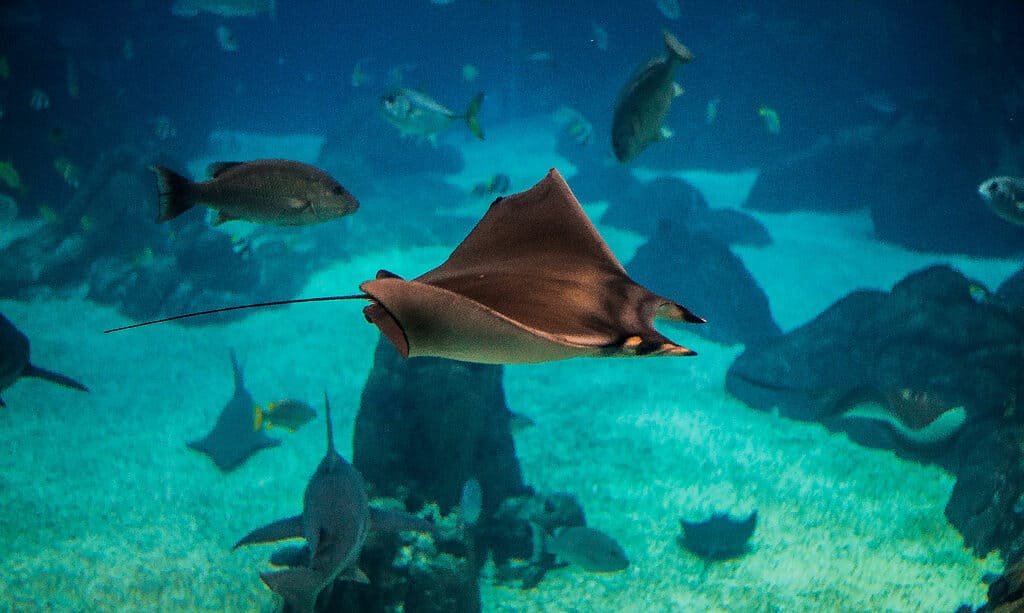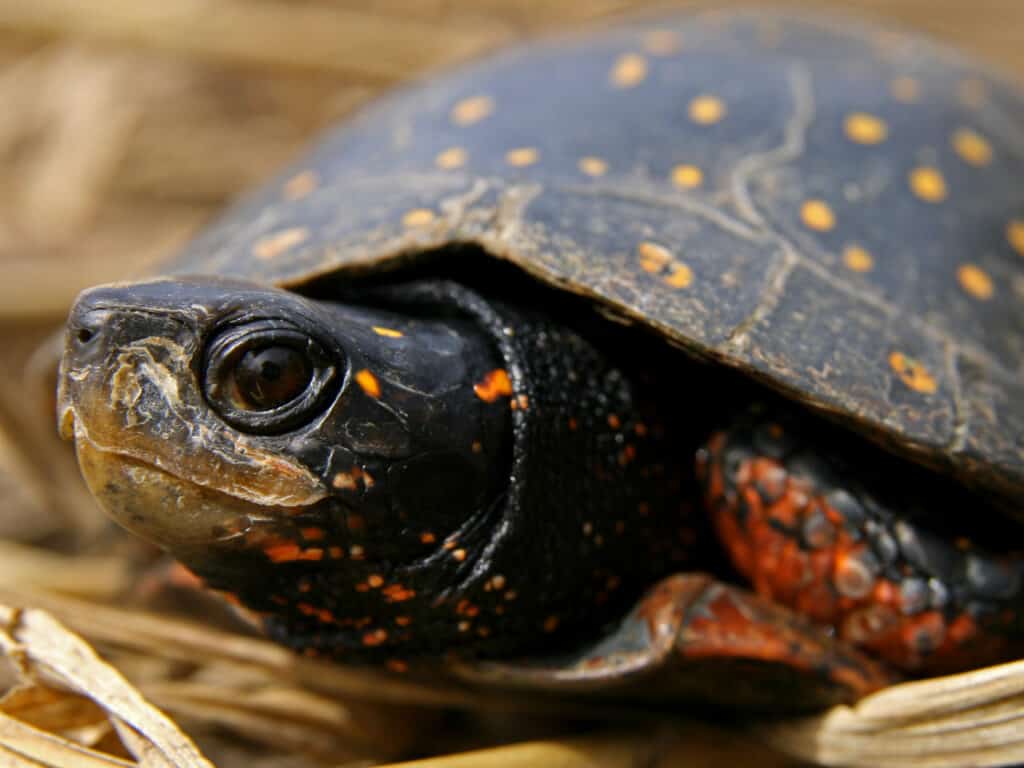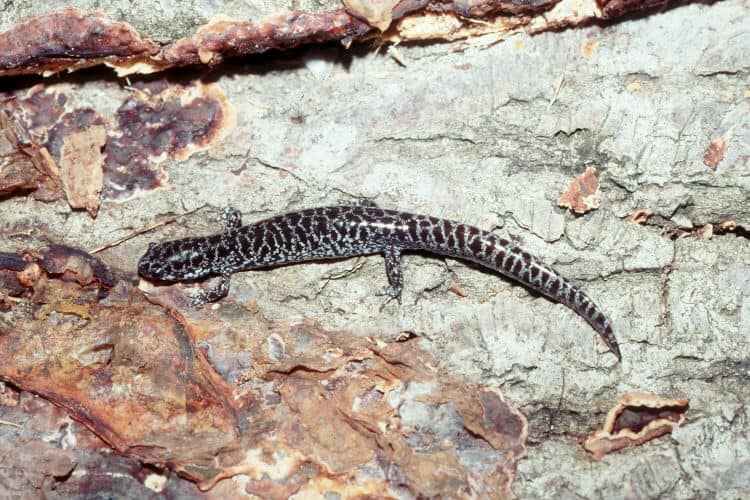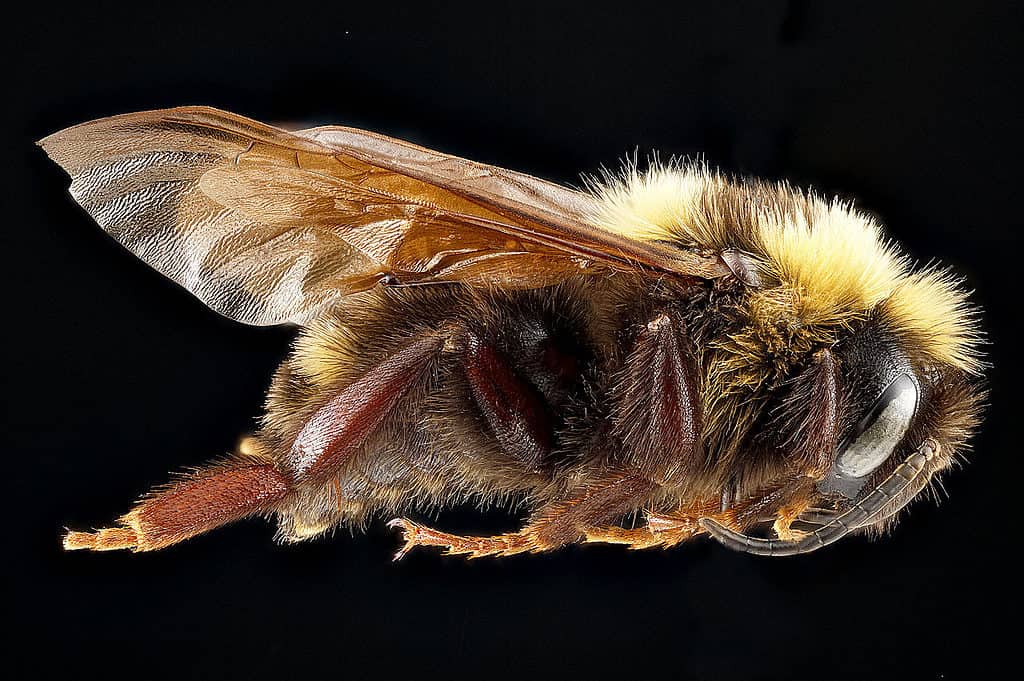Florida, which is nicknamed the Sunshine State, is located in the Southeastern United States. It has a predominantly humid subtropical climate, although some regions have a true tropical climate.
The state also has a diverse geography, so it should come as no surprise that it’s home to many native animals: terrestrial and marine mammals, birds, reptiles, and invertebrates. Moreover, the coastal waters are home to many aquatic vertebrates and invertebrates. In addition, more than 1,500 non-native animals have reached the state and become its residents.
Unfortunately, not all species thrive there and some suffer habitat loss or degradation. Some are even critically endangered, while others have already gone extinct, including the Caribbean monk seal and the Ochlockonee arcmussel.
Today, we’ll discuss some animals living in Florida that are listed either as endangered or critically endangered. Keep reading to learn why their populations are declining!
1. Spinetail Devil Ray

One of the primary reasons spinetail devil rays are endangered is that they produce only one pup every 1 – 3 years.
©EloyMR/Shutterstock.com
The spinetail devil ray, scientifically called Mobula mobular, also goes by the name “devil fish.” In 2018, the species was listed as endangered on the IUCN Red List.
These ray fish are some of the largest in their group, with a disk length of 11 feet, rarely reaching 17 feet. While they’re most common in the Mediterranean Sea, some are found on the U.S. coast, being spotted off of Florida, North and South Carolina, California, Texas, and Maine, where they swim in depths of up to around 3,650 feet, sometimes seen in shallow waters.
One of the primary reasons spinetail devil rays are endangered is that they produce only one pup every one to three years; thus, the population increase is minimal. However, they’re also subject to bycatch, meaning they’re unintentionally caught in fisheries that aren’t “destined” for them.
2. Spotted Turtle

Spotted turtles have a carapace length of up to 4.9 inches.
©Ryan M. Bolton/Shutterstock.com
Clemmys guttata, also called the spotted turtle, made its way to the IUCN Red List in 1996, when it was assessed as vulnerable. In 2010, however, its situation didn’t improve, and it was assessed as endangered.
Spotted turtles are semi-aquatic and have a carapace length of up to 4.9 inches. Their upper shells are broad and smooth, and they have a dark color marked with round yellow spots. They are primarily found in eastern North America, from Quebec and Ontario south to Florida.
It’s believed that over the past 25 years, the spotted turtle population has suffered a 50% decrease, and, unfortunately, population recovery is unlikely because of habitat loss. Other factors contributing to the population decline include alteration, collection for the pet trade, conversion, and other human impacts such as vehicle collisions. Currently, the species is under review for becoming protected under the Endangered Species Act.
3. Arogos Skipper

The arogos skipper is scientifically called Atrytone arogos.
©Charles T. and John R. Bryson, , Bugwood.org / CC BY 3.0 US – License
The arogos skipper is scientifically called Atrytone arogos, although you might’ve heard of it as a beard-grass skipper. The butterfly has a yellowish-brown color and a wingspan of 1.1 – 1.4 inches.
These butterflies were assessed as endangered in 2021. While they were historically found throughout the eastern United States, arogos skippers are now extirpated from many places east of the Mississippi River, living only in small populations in Florida, Louisiana, and New Jersey. On the other hand, their population is more stable in southwestern states like Oklahoma.
The main reasons for the population drop are the loss of habitat for farming and the decline in habitat quality.
4. Pointy-Lobed Firefly
The scientific name for this firefly is Photinus acuminatus. Officially, it is primarily found in the forests and wetlands of Alabama, Georgia, North Carolina, South Carolina, and Florida. However, while it is listed as endangered on the IUCN Red List, not much is known of its presence in the United States.
Originally, the firefly was known to inhabit only Florida and North Carolina. Scientists believe their population has gone extinct, especially in Florida, South Carolina, and North Carolina. First, their two known localities in Florida didn’t register any fireflies in the past 30 years, and their locality in South Carolina has been transformed into a golf course.
The primary reason for the population drop is habitat loss, but habitat degradation has also played a role. Will the species be listed as extinct soon? Time will tell.
5. Georgia Blind Salamander
The Eurycea wallacei, or Georgia blind salamander, is part of the Plethodontidae family and endemic to the southeastern part of the United States. It is primarily found in caves, karsts, and other subterranean habitats. In Florida, it is found in some caves in Jackson County, while in Georgia, it lives in Decatur and Dougherty counties.
The salamander was first listed as vulnerable in 2004 before being assessed as Endangered in 2021. The primary cause of the drastic population drop is the low quality of subterranean aquatic habitats in Georgia and Florida. This is caused by agricultural and industrial pollution, fluctuations in the water table caused by urban population growth, and irrigation. Furthermore, a future threat may include diseases, too, such as the salamander chytrid fungus.
6. North Atlantic Right Whale

The North Atlantic right whale can be distinguished from other aquatic creatures by the keratinized skin on its head.
©iStock.com/6381380
The North Atlantic right whale, scientifically called Eubalaena glacialis, is a baleen whale that can be distinguished from other aquatic creatures by the keratinized skin found on its head, called callosity.
Unlike other species on the list, this whale is listed as critically endangered, meaning its population decline is much more significant, as only 200-250 mature individuals are left. They are frequently seen in the winter calving grounds of Florida and Georgia.
Historically, one of the main causes of population decline was hunting. Nowadays, however, these whales are protected in the U.S. and Canada. Still, many North Atlantic right whales die from injuries caused by accidental entanglement and vessel strikes.
7. Frosted Flatwoods Salamander

The frosted flatwoods salamander is found only in low elevations in Florida, Georgia, and South Carolina.
©USGS / public domain – License
Yet another endangered salamander — the Ambystoma cingulatum or commonly called frosted flatwoods salamander. This is a mole salamander with a small head, a long, rounded tail, and short legs. It’s pretty small, measuring only up to 5.3 inches long. The frosted flatwoods salamander is found only in low elevations in Florida, Georgia, and South Carolina. In Florida, it inhabits only the St. Marks National Wildlife Refuge and the Apalachicola National Forest.
Interestingly, the primary cause of the population drop is the lack of fire. The disruption of the natural fire cycle causes the salamander’s main habitat (ponds) to become filled with woody vegetation and shrubs, thus affecting the reptile’s life cycle. Moreover, winter droughts decrease breeding success.
8. Escambia Crayfish
Procambarus escambiensis is a crustacean in the Cambaridae family. It is commonly called the Escambia crayfish and is only found in Alabama and Florida, more precisely in the Escambia River system. The population drop is caused by habitat degradation, that is, flatwoods being transformed into pine plantations.
The species was first assessed as vulnerable in 1996, becoming endangered in 2010. However, little is known today about their population, and further research is required to assess whether their conservation status should be updated.
9. Blacknose Shark

The blacknose shark lives in the Atlantic Ocean’s tropical and subtropical waters.
©iStock.com/ Ryan Cake
This requiem shark, called the blacknose shark, lives in the Atlantic Ocean’s tropical and subtropical waters. It’s a small shark that reaches only 4.3 feet long. It has large eyes, a long, rounded snout, and a small dorsal fin. Its most distinctive characteristic is the black blotch on its snout.
In the United States, the shark is found in the waters of coastal states like Florida and North Carolina.
This endangered shark is often hunted for its meat, although bycatch is also a great threat to the blacknose shark population. In the Southwest Atlantic, its population has supposedly registered a 50 – 79% reduction over the past 32 years.
10. Variable Cuckoo Bumblebee

The variable cuckoo bumblebee is a parasitic species of cuckoo bumblebee.
©USGS Native Bee Inventory and Monitoring Laboratory / CC BY 2.0 – License
The variable cuckoo bumblebee is a parasitic species of cuckoo bumblebee. These bumblebees have dark faces, yellow hairs on the vertex, dark brown wings, and black spots or patches on the thorax.
This species was listed as critically endangered in 2014 and is currently considered one of North America’s rarest bumblebee species. Scientists believe it might have already gone extinct in the U.S. states where it formerly lived, Florida included. However, until further research and confirmation, we can assume some individuals are still flying through Florida.
Some of the reasons that caused such a dramatic population decline include habitat loss, competition with non-native bees, climate change, and pesticide use. Moreover, since these bumblebees are parasitic, they directly depend on their hosts, the Bombus pensylvanicus or American bumblebee. This species’ population has also registered a drop, which might have caused variable cuckoo bumblebees to disappear.
Up Next:
- The 10 Most Endangered Species On Earth – And How To Help
- 6 Endangered Animals Recently Declared Extinct
- Discover 8 Animals Invading Florida!
The photo featured at the top of this post is © iStock.com/LagunaticPhoto
Thank you for reading! Have some feedback for us? Contact the AZ Animals editorial team.






